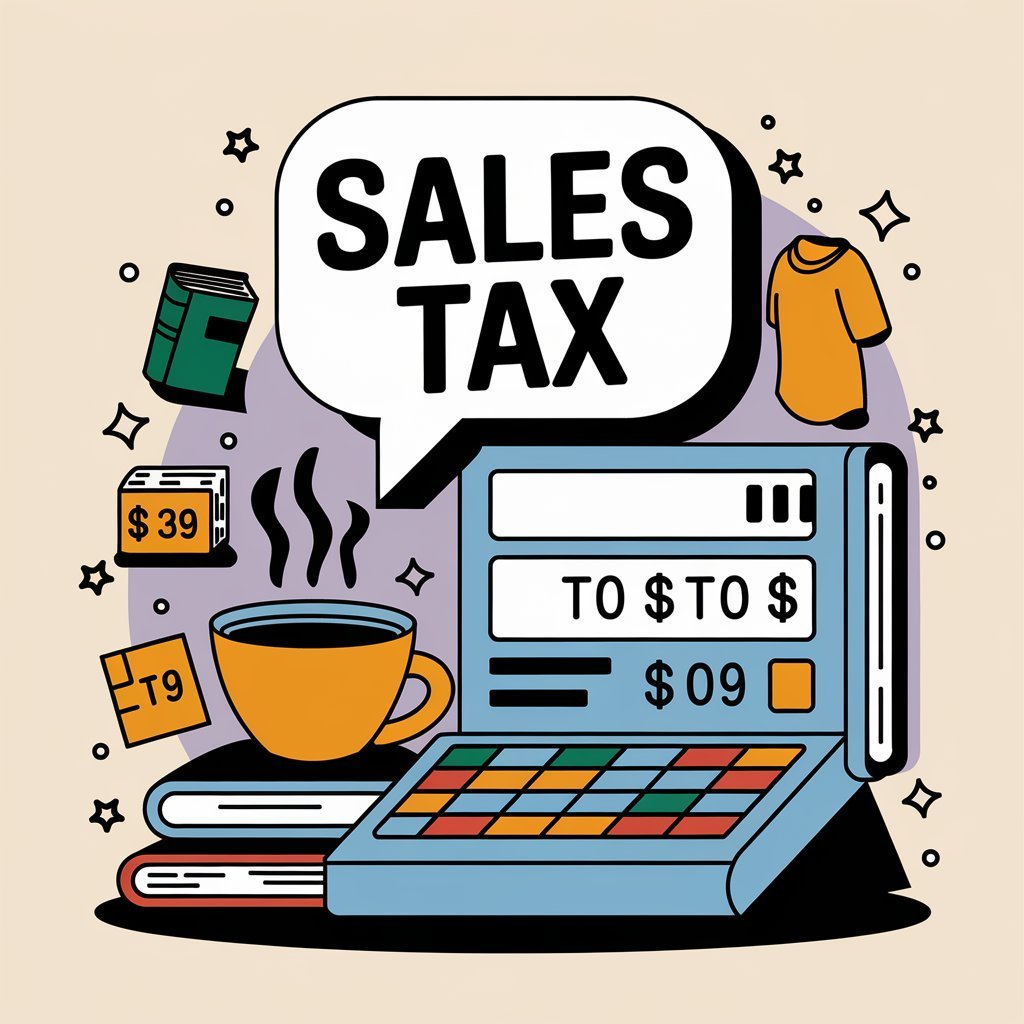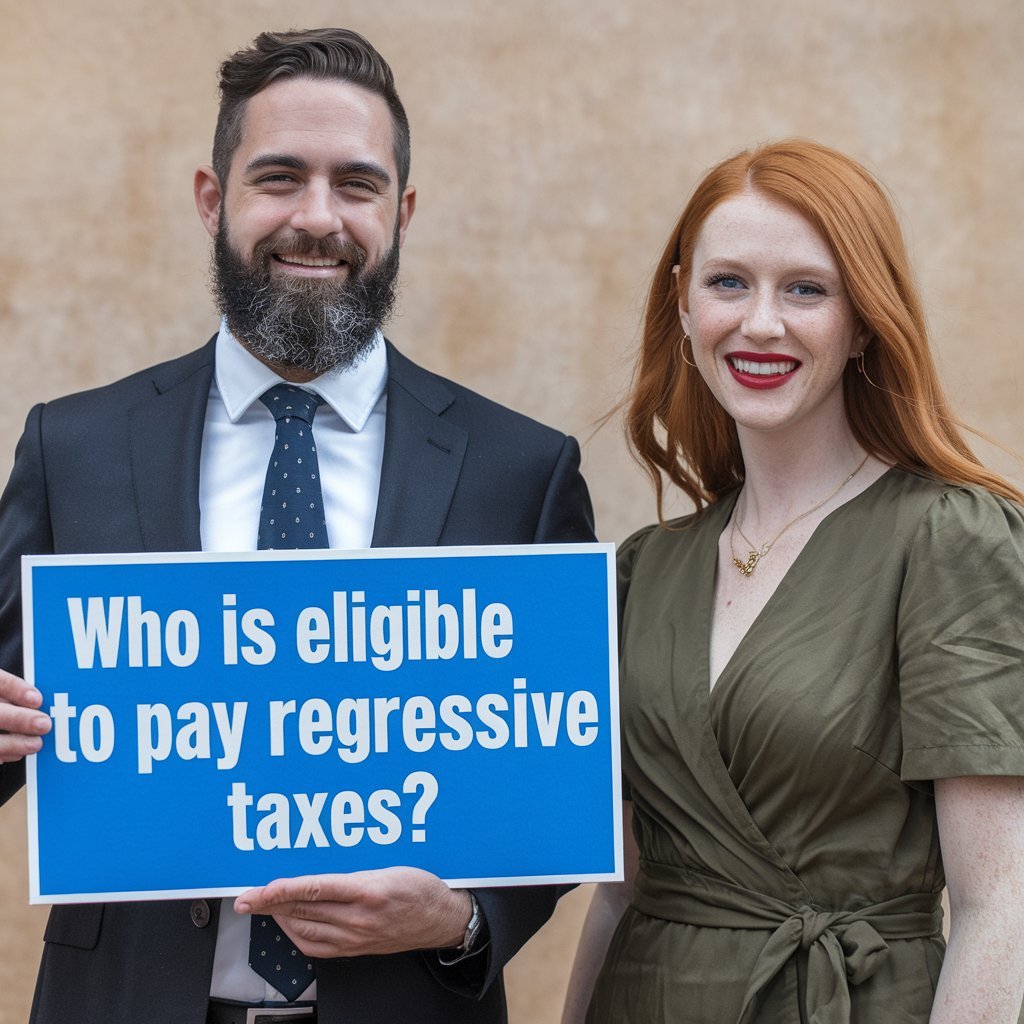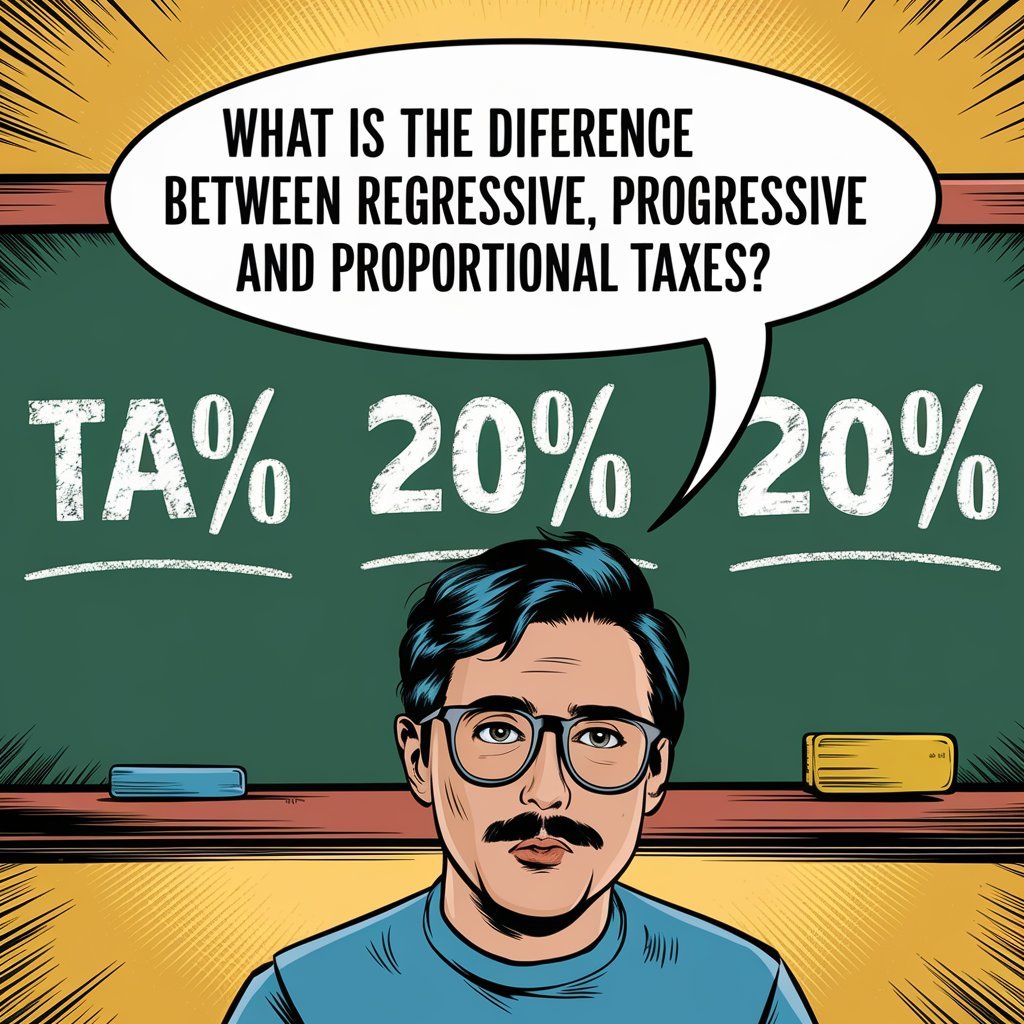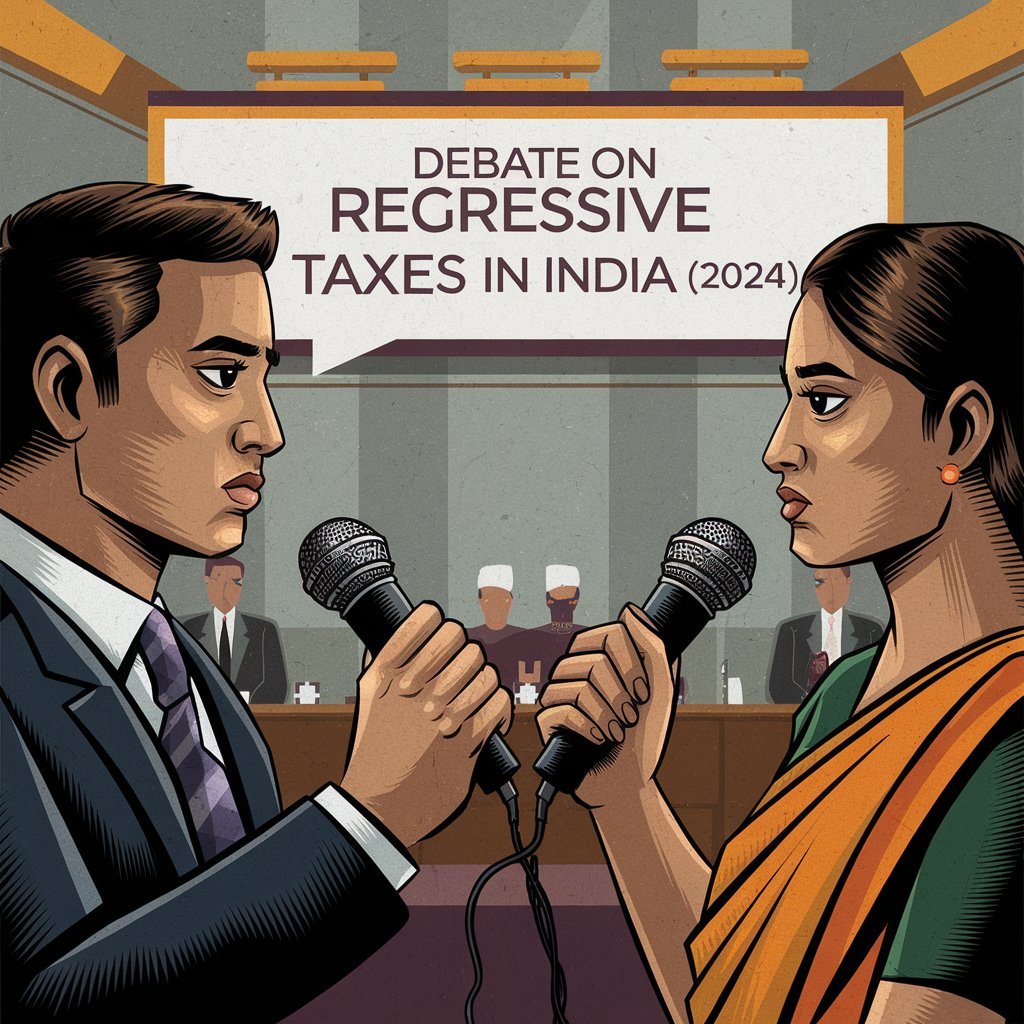Taxation in India is the lifeline of any modern economy which helps the Indian government to provide vital resources to finance public services, infrastructure and social welfare programs.
However, the structure of India’s tax system can have a very important impact on social equality and economic growth.
One of the most controversial types of taxation in our country is regressive taxation which helps in disproportionately affecting low-income individuals as compared to the rich.
In the context of India, a developing nation with high income inequality, the implications of regressive taxes are particularly clear.
Through this blog, we want to tell you that if our country wants to grow, it is very important to think deeply about the nature of regressive taxes.
This blog traces their impact on different sections of the population and considers the ongoing debate around their reform in 2024.
- What are the Regressive Taxes?
- What is the Landscape of Regressive Taxes in India?
- How Many Types of Regressive Taxes?
- Who is Eligible to Pay Regressive Taxes?
- What is the Difference Between Regressive, Progressive and Proportional Taxes?
- What is the Impact of Regressive Taxes in a Indian Society?
- What is the Debate of Regressive Taxes in india (2024)?
- In Conclusion
- FAQs
What are the Regressive Taxes?

Regressive taxes fall in a category in which as the taxable amount increases, the rate of tax also increases. In simple words, regressive taxes take a larger percentage of income from all people with low income compared to the higher income people.
Regressive taxes are the complete opposite of progressive taxes in which the tax rates are increased along with the income, thereby increasing the burden on those who are least capable of paying more.
Regressive taxes are always included in the category of indirect taxes for example, taxes, excise duties and value added tax (VAT). these taxes are applied uniformly on both goods and services.
However, since low-income individuals spend a larger portion of their income on these goods and services, they pay a larger portion of their income in taxes than richer individuals.
What is the Landscape of Regressive Taxes in India?

The tax structure of our country India is a good mix of direct and indirect taxes in which indirect taxes like Goods and Services Tax (GST) play a very important role.
While there are elements of progressiveness in the Indian tax system, especially in the case of income tax, the predominance of indirect taxes includes regressive elements in the system.
How Many Types of Regressive Taxes?

If you look at it, there are so many recognized types of regressive taxes in India, out of which we have explained the main types in detail:
- Sales Tax
- Sin Tax
- Property Tax
- Payroll Tax
- Excise Tax
- User Fees
- Flat Tax
Sales Tax

Sales tax was a tax imposed on the sale of goods in our country India, the simple meaning of which was that it was collected by the seller from the buyer after which it was given to the government of our country.
Sales tax was imposed on all governments at both levels and every state had its own sales tax laws and rates.
However, in 2017 the government of our country replaced the sales tax with Goods and Services Tax. GST has been included in the category of indirect taxes which includes various state and central taxes including sales tax, excise duty and service tax.
Sin Tax

Sin tax in India falls under the category of regressive taxes that are imposed only on goods and services that are considered harmful or unhealthy for the individuals and society of our country.
The main objective of introducing this tax by the Indian government was to discourage the consumption of these products by making them more expensive.
At the same time, this tax is also a very good way for the government to generate additional revenue which can be used for public health initiatives or other social welfare programs.
Common products subject to sin tax in India include:
- Tobacco Products
- Alcoholic Beverages
- Sugary Drinks
- Gambling and Betting
Property Taxes

Property taxes are imposed in our country as an annual tax which has to be paid by all property owners to their local municipality or government authority. Property taxes are imposed on all types of real estate including land, residential buildings and commercial properties.
Property taxes can be calculated very simply based on various factors such as the property’s location, size, use, and sometimes the age or type of construction. Local governments use the overall revenue from property taxes to fund public services such as roads, schools, and sanitation.
Payroll Taxes

In our country India, payroll taxes are included in the category of taxes which are to be paid only by the employers by deducting them from the monthly salary of their employees
Taxes like these mainly include contributions to social security schemes like the Employees’ Provident Fund (EPF), in which both the employee and the employer contribute a certain percentage of their monthly salary.
Another major component is the Employees State Insurance (ESI) which is a health insurance scheme offered by the Government of India which is applicable only to employees earning below a certain limit in which both the parties contribute equally.
Excise Taxes

In our country India, the government levies indirect taxes, also known as excise duties, on the production, resale or consumption of particular goods within the country.
These duties are usually imposed on goods such as cigarettes, alcohol, fuel and luxury items.
Unlike normal sales taxes, excise taxes can be levied directly during the production or manufacturing process, which simply means that the tax is included in the price of the product before it is paid by the customer.
Excise duties are primarily used to fund government operations, but they are also able to perform a number of functions to control the use of specific products, especially those that may be hazardous to human health or the environment.
Depending on the type of goods, both the central and state governments in India collect excise duties. To understand, state governments levy excise duties on goods such as alcohol within their borders, while the federal government levies excise duties on goods produced across the country.
User Fees

User charges in India simply mean the price that consumers pay for the use of one or more services that are being offered by government agencies, institutions or service providers to the general public.
These charges are usually levied under the cost-recovery model of delivery of these services and can cut across health, education, transport and even the use of utilities like water and electricity.
User charges are needed to ensure that a certain proportion of the cost of services is recovered from the users of the services apart from taxpayers’ money.
Flat Taxes

In the Indian context, Flat tax is understood as a form of taxation where a unified rate is imposed on the income of taxpayers.
Unlike proportional or progressive tax systems where tax rates are lower at lower income slabs and increase along the slab, flat tax slabs impose the same percentage on every individual or company.
In this approach no one’s tax rate changes, all taxpayers pay tax in the same proportion of their income. There is an ongoing debate on flattening taxes in India in an effort to meet the need to rationalize the tax structure and improve compliance.
Who is Eligible to Pay Regressive Taxes?

Regressive taxes in India are generally imposed on everyone who buys goods, uses services, or pays certain fees, and it has no connection with the monthly income of a consumer. So, we have explained here for you all to understand in a better way who is eligible to pay regressive taxes:
- Consumers: Any individual purchasing any goods in India has to pay retrograde taxes. Every individual in the country is included in this and their income does not matter because these taxes are completely included in the price of the products or services.
- Users of Specific Goods: Any individual who purchases specific products such as alcohol, tobacco or fuel is also required to pay excise duty which is included in the price of all these products.
- Service Users: All the people who use any public services in India like toll tax or public transport have to pay this regressive tax no matter what their income is and how much it is.
- Residents in States with Professional Tax: In all states where business taxes are imposed, salaried individuals pay the regressive taxes in full. Although it is a flat-rate tax, it is still more likely to have an adverse effect on low-income people.
What is the Difference Between Regressive, Progressive and Proportional Taxes?

We have already told you all about regressive tax in detail above, hence here we will discuss only progressive and proportional taxes.
Progressive Taxes

Progressive tax is a structure of the tax system where the rate of taxation increases in a proportional manner with the increase in income or a person’s ability to be taxed.
This means that people with higher incomes pay a more extensive portion of their income to taxation than people with lower incomes.
As for progressive taxation, the objective is to make those individuals who have higher income levels pay a greater amount of money in terms of government revenue and try to reduce income differences.
Key Features of Progressive Taxes
- Income-Based: The extent of taxation depends on certain tax slabs which solely depend on the income of the taxpayer. Although the income tax measure is progressive in all states, it means that as the income increases, the tax rates also increase.
- Tax Brackets: Progressive tax systems are usually characterized by the existence of multiple tax rates. For example, a particular firm may be allowed to pay 10% of its income up to a certain level, 20% of income at the next level, and so on.
- Fairness: Progressive taxes are said to be more equitable than regressive taxes because they assess according to the ability to pay. The rich are charged more taxes while low-wage earners contribute a lower percentage of their earnings.
- Common Examples: An example of a progressive tax, which is being applied in most countries, is the income tax. Incidentally, the income tax structure prevalent in India can best be described as ‘progressive’, with minimum and maximum rates of tax for different slabs of income.
- Redistribution of Wealth: In this case, especially the progressive ones are useful in helping redistribute the wealth by many aspects as the rich may be privileged to pay more towards the public goods which are of benefit to the less.
Proportional Taxes

The tax system of proportional taxes requires every individual to pay the same rate of tax, as a percentage, of the total income earned from their business.
While progressive taxes are levied based on the income-generating capacity of taxpayers, regressive taxes target low-income earners, while proportional taxes serve to give the same tax rate to all income earners.
Key Features of Proportional Taxes
- Uniform Tax Rate: In a proportional tax system, the tax rate is a fixed percentage of all income earners who are asked to pay tax. For example, if the current tax rate is 10%, then every individual, whether he is paid a sum of ₹50,000 or ₹5,00,000, will have to pay 10% of his income in tax.
- Simplified Tax Structure: Proportional taxes are much easier to administer because they have a single rate, making it easier for people to calculate and for the government to collect.
- Effect on Income Distribution: Due to the fact that tax rate is the same for all, taxes proportional do not decrease income differences. Both high earners and low earners pay the same proportion, a fact that indicates that while the absolute number of taxes paid by the higher earners is higher, the difference they feel when making the payments is far smaller than that of low earners.
- Common Examples: Some states follow the principle of proportional taxation for income tax, corporate tax or social security contributions. However, this system is less popular in income tax as many governments try to have a progressive tax structure where the tax burden is distributed proportionally.
Relationship Between the Three
Distribution of Tax Burden: The main difference between these tax systems is how the tax burden is distributed among different income groups.
- Regressive taxes put a greater burden on the lower income groups.
- The main purpose of progressive taxes is to reduce the inequality in the society by giving more taxes to the higher income earners.
- Proportional taxes try to apply the same tax across all income levels.
Economic Impact
- Regressive taxes can do a lot to prevent income inequality from increasing by taxing more of those who have less.
- Progressive taxes are basically designed to reduce income inequality by easily ensuring that people who earn more contribute more.
- Proportional taxes are much more neutral in terms of income redistribution because they do not discriminate between high and low income earners.
What is the Impact of Regressive Taxes in a Indian Society?

The implications of regressive taxes go far beyond the immediate financial burden on individuals. They have profound implications for income distribution, poverty levels and social mobility in India.
Exacerbation of Income Inequality

India is one of the most unequal societies in terms of income distribution. Most of the material, land, houses, capital and other forms of wealth are owned by the richest 10% of the country.
As a result, the poor are given a raw deal when it comes to regressive taxes as the assessment is aimed at increasing the gap between the two sections of society.
People with low incomes are forced to pay a higher share of their income in taxes, leaving them with little or no cash to save, invest and thus improve their standard of living.
Hindrance to Poverty Alleviation

Poverty alleviation remains a huge problem in India even though the country has been registering economic growth for the last several years. Most indirect taxes like GST and excise duty only serve to push back most of the poverty alleviation measures.
For instance, while the government has come up with various welfare reforms which basically involve cash transfers to the needy sections of society, the achievement of such reforms may get wiped out by the burden of regressive taxes.
Impediment to Social Mobility

Opportunities are the chance for people to move up the economic hierarchy which is the key to making society more equitable. However, regressive taxes are harmful to the poor because they limit the money people have which they can use on basic necessities like education and health.
When a majority of a family’s income is given away to the government in the form of taxes, fewer resources are left to build the future.
This may prevent a low-income individual from getting a college education, investing in a business, or any other venture that has the potential to take him to a better standard of income.
What is the Debate of Regressive Taxes in india (2024)?

As development is growing rapidly in our country, the debate about the fairness and effectiveness of regressive taxes in 2024 is gaining momentum.
Now the discussion is focused on how to reform the tax system to make it more equitable and also to ensure that the government continues to generate enough revenue for public expenditure.
Revisiting GST Rates and Structure

The most important of these debates concerns GST. There is a growing demand for changes to the GST to reduce the regressive effect.
Some recommendations include implementing a better progressive structure of GST that includes a lower percentage for essential goods and services, as well as a higher percentage for luxury items.
Another recommendation is to reduce or eliminate GST on more essential goods for a graduated GST based on people’s income, although the implementation of the latter may be somewhat complicated.
Reforming Excise Duties and Sin Taxes

The discussion of excise taxes and sin taxes has also heated up recently. These taxes are intended to help reduce the use of products that are considered unhealthy, but are problematic due to the fact that they are regressive and according to the thought process of the law.
Rethinking Customs Duties

There is also growing appreciation of the rationale behind changing customs duties so as to minimise the impact on buyers with the least ability to pay. This can be implemented in two ways.
One is to reduce customs duties on goods that may be considered essential to society or the other is to eliminate customs duties on such goods altogether.
Another option is to offer subsidies or tax credits to help low-income individuals purchase imported goods to offset the cost of imports.
Expanding the Role of Direct Taxes

Expanding the role of direct taxes, particularly income tax, is another approach to making India’s tax system more progressive.
By increasing the progressivity of income tax, the government could raise more revenue from high-income individuals while reducing the reliance on regressive indirect taxes.
Enhancing Social Welfare Programs

Dealing with the adverse effects of such taxes would require reforms not just in taxation but also in social welfare in general. Thus, when social welfare programmes are properly implemented, they can only help those who are affected by regressive taxes.
In Conclusion

Considering regressive taxes in India brings to the fore matters such as fairness on the economic front, equity on the social plane and the conduct of fiscal policy.
Even though many important taxes such as GST, excise duty and customs duty are collected by the Centre and contribute to the Centre’s revenue, questions about the fairness of such a system of taxation and its impact on the social structure cannot be far from one’s mind.
Therefore, in this blog post we have provided all the information about Regressive Taxes so that all of you can get detailed knowledge about Regressive Taxes which you were not able to get from anywhere else.
FAQs
Q1. How do regressive taxes impact small businesses in India?
A1. Regressive taxes, disproportionately burden small businesses in India. These taxes take a larger percentage of income from low-income earners, who are more likely to be small business owners, leading to reduced profit margins and hindered growth.
Q2. How do regressive taxes influence consumer behavior in India?
A2. Regressive taxes, disproportionately affect lower-income consumers in India. As these taxes are levied on goods and services, they increase the cost of living for those with lower incomes.
Q3. How do regressive taxes affect India’s informal economy?
A3. These taxes are often difficult to enforce on informal businesses due to their lack of formal registration and record-keeping.
Q4. How do regressive taxes interact with inflation?
A4. Regressive taxes can exacerbate inflation by increasing the cost of goods and services, leading to higher prices for consumers.
Q5. Can digital taxation be considered regressive?
A5. Whether digital taxation is regressive depends on the specific tax structure. If the tax is imposed on a percentage of digital revenue, it could be considered regressive as it would disproportionately affect smaller digital businesses with lower revenue.


Add a Comment